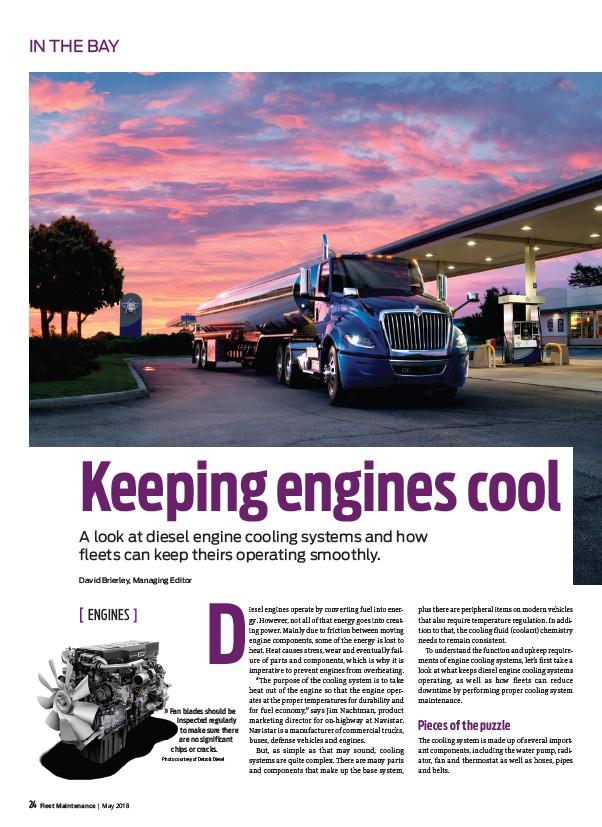
IN THE BAY
Keeping engines cool
A look at diesel engine cooling systems and how
fl eets can keep theirs operating smoothly.
24 Fleet Maintenance | May 2018
D
David Brierley, Managing Editor
ENGINES
» Fan blades should be
inspected regularly
to make sure there
are no significant
chips or cracks.
Photo courtesy of Detroit Diesel
iesel engines operate by converting fuel into energy.
However, not all of that energy goes into creating
power. Mainly due to friction between moving
engine components, some of the energy is lost to
heat. Heat causes stress, wear and eventually failure
of parts and components, which is why it is
imperative to prevent engines from overheating.
“Th e purpose of the cooling system is to take
heat out of the engine so that the engine operates
at the proper temperatures for durability and
for fuel economy,” says Jim Nachtman, product
marketing director for on-highway at Navistar.
Navistar is a manufacturer of commercial trucks,
buses, defense vehicles and engines.
But, as simple as that may sound, cooling
systems are quite complex. Th ere are many parts
and components that make up the base system,
plus there are peripheral items on modern vehicles
that also require temperature regulation. In addition
to that, the cooling fl uid (coolant) chemistry
needs to remain consistent.
To understand the function and upkeep requirements
of engine cooling systems, let’s fi rst take a
look at what keeps diesel engine cooling systems
operating, as well as how fl eets can reduce
downtime by performing proper cooling system
maintenance.
Pieces of the puzzle
Th e cooling system is made up of several important
components, including the water pump, radiator,
fan and thermostat as well as hoses, pipes
and belts.